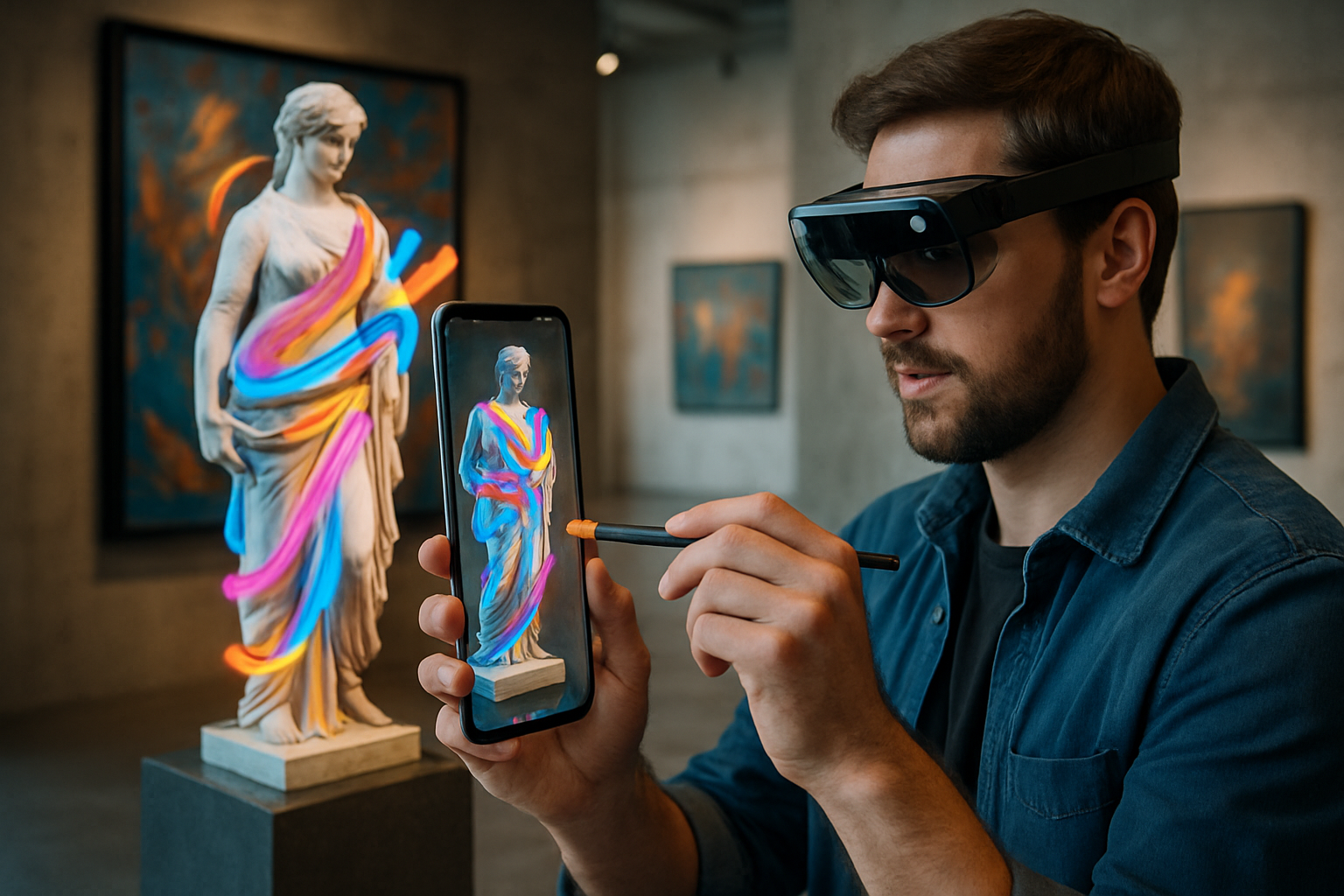Augmented Reality's Artistic Revolution
In a world where technology and creativity increasingly intertwine, augmented reality (AR) has emerged as a groundbreaking medium for artistic expression. This innovative fusion of digital elements with the physical world is reshaping how we create, experience, and interact with art. From interactive museum exhibitions to immersive public installations, AR is pushing the boundaries of traditional artistic forms and opening up new realms of possibility for creators and audiences alike.

Redefining Gallery Spaces
AR has revolutionized the concept of art galleries and museums. Traditional white-walled spaces are now portals to dynamic, ever-changing exhibitions. Visitors can use their smartphones to reveal hidden layers of artwork, transforming static paintings into animated masterpieces or unlocking additional context and information about the pieces they’re viewing. This technology not only enhances the viewer’s experience but also allows curators to present more content without the constraints of physical space.
Public Art Reimagined
The impact of AR on public art has been particularly transformative. Artists can now create large-scale, interactive installations that exist in the digital realm but are anchored to specific locations in the real world. These AR sculptures and murals can change with the time of day, respond to weather conditions, or even interact with passersby, turning city streets into living canvases. This democratization of art has made it more accessible to the public, turning everyday environments into impromptu galleries.
Collaborative and Participatory Art
Augmented reality has fostered a new era of collaborative and participatory art. Artists can create frameworks that allow audiences to contribute to the artwork in real-time, blurring the lines between creator and viewer. These collaborative pieces evolve over time, reflecting the collective creativity of the community. AR art installations can also adapt to user interactions, creating personalized experiences that change with each viewing, making every encounter with the artwork unique.
The Technical Challenges and Innovations
While AR presents exciting opportunities for artistic expression, it also comes with its own set of technical challenges. Artists must grapple with issues of device compatibility, location accuracy, and the limitations of current AR technology. However, these challenges have spurred innovation, leading to the development of more sophisticated AR platforms and tools specifically designed for artistic creation. As the technology continues to advance, so too does the potential for increasingly complex and immersive AR artworks.
Ethical Considerations in AR Art
The rise of AR in art has also raised important ethical questions. As digital overlays become more prevalent in public spaces, concerns about privacy, consent, and the ownership of virtual space have come to the forefront. Artists and technologists are grappling with how to create responsible AR experiences that respect individual rights while still pushing the boundaries of creative expression. These discussions are shaping the development of ethical guidelines for AR art, ensuring that this new medium evolves in a way that benefits society as a whole.
The Future of AR in Artistic Expression
As augmented reality technology continues to advance, its potential in the art world seems limitless. We are likely to see more seamless integration between physical and digital elements, with AR becoming an integral part of how we experience art in our daily lives. From personalized art experiences tailored to individual preferences to global collaborative projects that span continents, AR is poised to redefine the very nature of artistic creation and consumption.
Conclusion
Augmented reality’s artistic revolution is more than just a technological trend; it represents a fundamental shift in how we perceive and interact with art. By blending the digital and physical worlds, AR is creating new possibilities for expression, challenging traditional notions of art, and inviting audiences to become active participants in the creative process. As this technology continues to evolve, it promises to reshape the landscape of artistic expression, offering exciting new avenues for creativity and engagement in the years to come.





